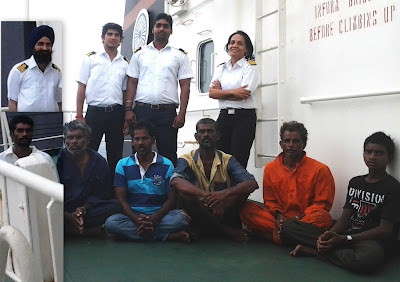COLUMN: LOCATION DIARY
Dharmajan
Bolgatty talks about his experiences in the films, 'Paappi Appacha',
and 'Puthiya Theerangal'
Photos: Dharmajan Bolgatty; the poster of the film, 'Puthiya Theerangal'
By
Shevlin Sebastian
When
Dharmajan Bolgatty appeared on the sets of 'Paappi Appacha', at
Thodupuzha, in September, 2009, he felt nervous. This was his first
role in a Mollywood film. He was supposed to play a sidekick of
Dileep called Kuttappi. Soon, after he arrived, he acted in a couple
of scenes with Dileep.
Thereafter,
associate director Biju Arookutty told Dharmajan that he could take a
rest. “I wandered around and found there was no place to sit,” he
says. “The area was near a dam and there were few facilities.”
After
a while, Dharmajan came near two caravans placed next to each other.
There was a Tamil boy who looked after them. Since he had seen
Dharmajan acting with Dileep, he assumed that the former was a big
shot and opened the door. So Dharmajan stepped in.
“It
looked so comfortable,” says Dharmajan. “There was a nice bed, a
TV as well as a small washroom. After a while I lay down and went off
to sleep.”
Outside,
debutant director Mamas wanted to change a scene which had been shot
earlier. Dharmajan was called for, but they could not find him. They
searched everywhere.
Finally,
Dileep got tired of waiting. So, he decided to have a rest. However,
when he stepped inside, he got a shock: there was Dharmajan lying on
his bed. Dileep said, “Dharmajan, you are sleeping peacefully,
while everybody is frantically searching for you.”
Dharmajan
sat up in shock.
Meanwhile,
Dileep stepped outside and shouted, “He is right here.”
The
crew members rushed up. “Cameraman Sanjeev Shankar was so angry
that I had slept in Dileep's bed he would have sacked me on the
spot,” says Dharmajan. “What saved me was that Dileep was not
shocked or surprised. I think he was used to my style and liked it.”
Soon, the shoot resumed once again.
Meanwhile,
Dharmajan had an entirely different experience on the sets of Sathyan
Anthikad's 'Puthiya Theerangal' (2012). Along with Dharmajan, veteran
actress Molly Kannamaly (popularly known as Molly Chechi) also had a
role. During the shoot at Allapuzha, they stayed at the Hotel
Regency. While Molly was staying on the ground floor Dharmajan was on
the first floor. “Sometimes we had our meals together,” says
Dharmajan.
Once
when they were doing so, in his room, Dharmajan got a call on his
mobile. It was his friend Suresh (name changed), a businessman, who
travelled often to Allapuzha. “When he heard that I was in
Allapuzha, he said he wanted to come and meet me,” says Dharmajan.
“I said, 'No, it may not be right, because I have a woman with me.
She is my girlfriend'.”
Suresh
threatened that he would inform Dharmajan's wife. So Dharmajan
quickly said, “Please don't tell her, but you can come.”
Dharmajan
then told Suresh that he might not be in the room because he had to
go for an urgent discussion in [fellow actor] Unni Mukundan's room.
But Dharmajan said, “You can come and enjoy. I will leave the door
unlocked.” Suresh quickly took the room number from Dharmajan.
Then
Dharmajan told Molly Chechi to cover herself with the sheet and lie
on the bed. Once she did so, he stepped out and hid further down the
corridor. “After a while, I saw Suresh come quietly, like a thief,”
says Dharmajan. “He came and stood in front of the room, looked
quickly to the left and right. And then he slowly opened the door and
went in. For a a few moments there was a complete silence. Molly
Chechi told me later that Suresh slowly removed the sheet from her
face. But when he saw that it was an old woman, Suresh let out a
string of abuses and left the room in a hurry.”
(The
New Indian Express, Kochi, Thiruvananthapuram and Kozhikode)













